Never again I wanted to put my life at risk like in 2011 at the foot of Mt. Everest at an altitude of over 4,000m. One voice inside of myself accepted that altitude limit back then. But the other voice was still convinced that other factors were as well responsible for my crisis at that time. 3 years later I was about to move for a few months into the Andean high plateau, that is situated between an altitude level of 2,000-4,500m. That’s why shortly before I went to my pulmonary doctor in Austria. And according to my test results he said that I shouldn’t exceed an altitude limit of 3,500m. Diamox pills were prescribed to me in case I should approach an altitude level of 4,000m. But that is the ultimate maximum for my body he said. I’ve understood that. Seriously. But at the same time, it was clear to me that Mister Doctor could not take into account the overall factors for such a complex situation in his routine forecast. It seemed more reasonable to listen to my body instead of numbers.
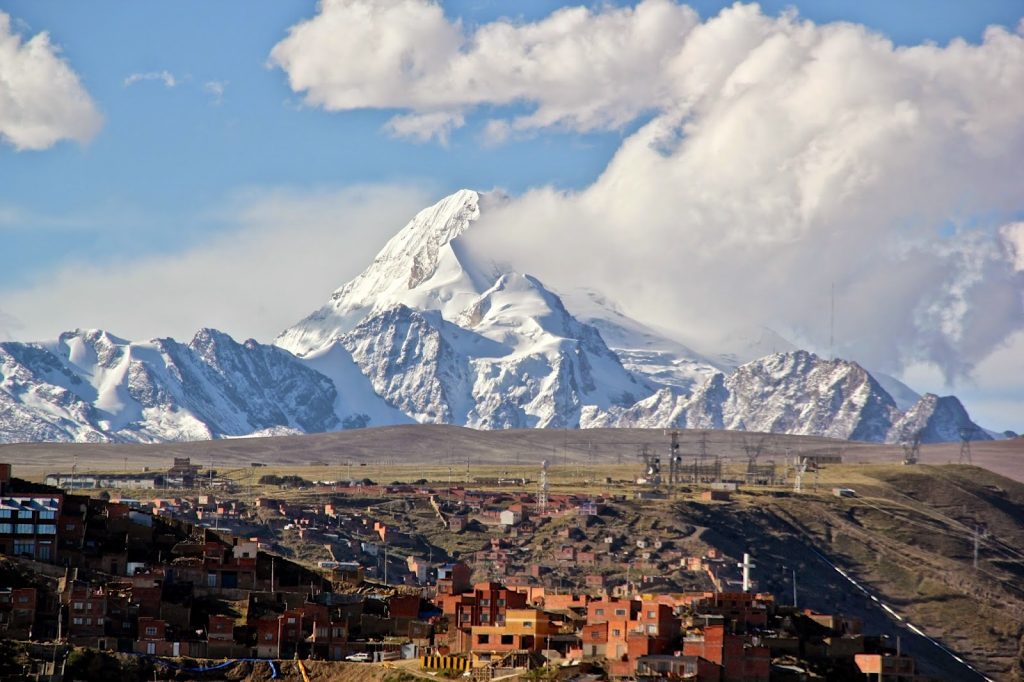
Start of acclimatization
End of January I landed in Quito (Ecuador). From 0m to 2,800m within a few hours. Got immediately altitude sick. That meant: 3 days in bed. Dizziness and nausea. Shortly afterwards, the first opportunity for a test got offered: Quito’s cable car (TelefériQo) leads to a mountain station at the Pichincha volcano at 3,996m. Perfect. If I feel bad, I could go back down straight away. But unexpectedly this did not happen. I had no sign of a headache. Should I really dare to climb the volcano summit (4,700m) spontaneously? Insane. But actually I had enough water with me. I said to myself. And carried on. 1,5 hours later I was at the summit. Much more than at my highest point during my Mt. Everest trek (4,300m) and still without any sign of a headache. So after only a few days my doctor’s forecast was already put in perspective.
In the Andes since 2 weeks
Next test was the Quilotoa Loop. A 12.5km route along a stunning volcanic crater – at an altitude of 3,900m. Outcome: No headache at all. The next mountain was a test for really ambitious goals: the ascent of the Iliniza Norte (5,126m). With a mountain guide and my friend Ben. However, my buddy Ben had to turn just 300 metres below the summit. His AMS symptoms became too severe. We marched up way too fast with a guide that didn’t really care about our slower speed. But I carried on. I still had no sign of a headache – not even at the summit. I couldn’t explain. But I was full of joy. My first 5,000 metres above sea level.
In the Andes since 1 month
My body was ready. Next destination: Cotopaxi (5,896m). If I would had failed at Iliniza Norte, Cotopaxi would have never become an issue. So now I wanted to prepare myself as professional as possible. I ate right. Drank a lot. Slept well. And then… Just in the night we were supposed to start our Cotopaxi climb at 1am I already had AMS symptoms after I woke up at 3,500m. I couldn’t believe it. I was mountain sick before it really started. And we received some more bad news. Instead of starting our ascent tonight at 4,700m, for some reason tonight we were forced to stop our Toyota Landcruiser at 4,400m. Which meant to have additional energy to climb 300 metres more. I couldn’t help being angry with my body. Why just now I had to have a headache and nausea already at 3,500m after all the preparations in the last weeks?! Immediately it was clear to me that I would not reach the summit that day.
But since I’ve already booked the whole tour, the perspective of getting at least a little closer to Cotopaxi was still attractive enough. When we reached the glacier, I put on the crampons. And started. Of course I was the slowest and the one who took most of the breaks. I left my energy down at 3,500m. In the end I even managed to climb up to 5,528m. Then my toes pointed down. That was it. The few remaining energy I had to save for my return. I sat down. Looked around. And had a grin as if I had reached the summit. Now I was able to understand the lesson of my body. The view was already overwhelming here. So now, I knew my altitude limit. It’s right here. But most of all I was proud to have had the courage to stop and not risk anything like in the Himalayas.
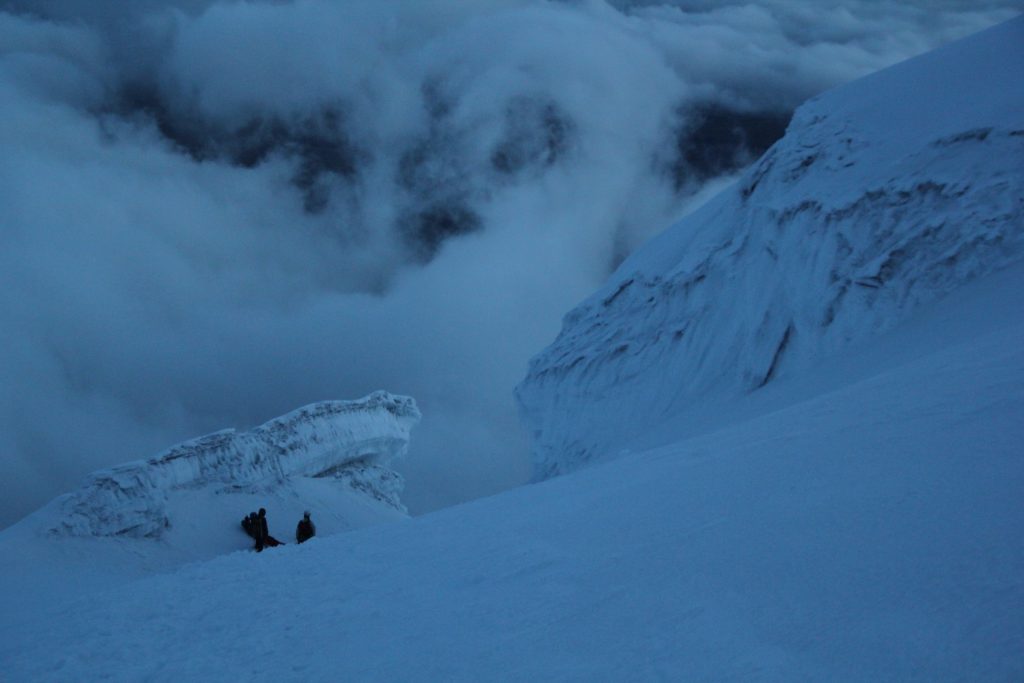
In the Andes since 2.5 months
I didn’t really think about mountain climbing anymore. Until I met an Australian in the bus on my way from Peru to Bolivia talking about his mountain experience on Huayna Potosi (6,088m). By doing so, he placed inevitably that idea into me like a virus. I still didn’t feel any upcoming desire in the first few days after I heard his story. However, I could neither deny nor ignore that having been already since 2.5 months in the Andes, were actually the perfect preparation for such an ambitious project. And wasn’t the real reason for stopping my ascent to Cotopaxi simply a bad day? That’s the question when this idea became viral. Again I was infected with mountain climbing. Just this time without being thrilled. My respect for this mountain was too big, that Bolivians proudly call the mountain on the paramount pictures logo.
Altitude training
Most of it I’ve done unconsciously while being already since 2.5 months in these heights. 1 week before my ascent I went to La Paz staying at an altitude of around 3,700m and I played football twice a week. My aim was to produce more red blood cells to absorb and transport more oxygen. After these sessions I gave my body a lot of rest. I also looked for a test mountain. The Chacaltaya (5,421m) is perfect for an acclimatization training. You can drive up to 5,100m by bus, then you only have to climb 300 meters in altitude. But I didn’t go up. Running was the challenge. That was my personal test. If I didn’t have any headache while running so high, I knew I would be ready for this mountain that looked like a painting.
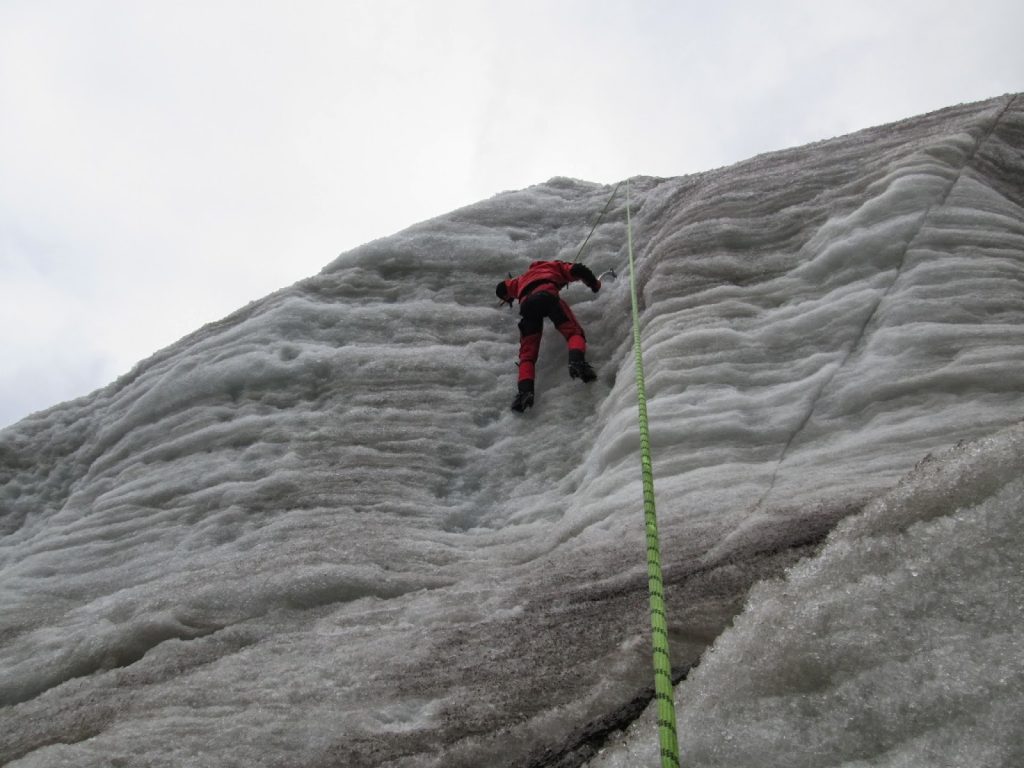
Ascent - day 1
2 days and 1 night would have been possible for the ascent. I booked 3 days and 2 nights. I didn’t want to have any stress at this altitude. And I booked a mountain guide just for myself – twice as expensive – but I didn’t want to depend on the health of others. The trip from La Paz to the base camp (4,700m) took around 3 hours. Miguel, my mountain guide, who has been to the summit a few hundred times, drove the Landcruiser. In the base camp I meet two Japanese girls and one German. In the afternoon we climbed with Miguel at the edge of the glacier at 5,000m. Exercising for tomorrow. I was supposed to climb a vertical ice wall with ice axes. Note: I have absolutely no climbing experience, neither I had an ice ax in my hand nor an ice wall in front of me. I think I didn’t do very well, but it worked. The Japanese girl climbed up like a monkey. Back in the evening at the base camp, food and bed were waiting.
Ascent - day 2
I slept well according to the circumstances. After breakfast we started. Carrying 15kg on my back. Up to Camp 2. We should need about 3 hours for the 550 meters of ascent over rock and scree. Miguel walked at a pace as if he was walking on the beach. But he never went too far away and kept encouraging me to take breaks. After only 1h 50min we reached Camp 2 (5,270m). Way too quickly, I thought. Hopefully I haven’t wasted my precious energy for tomorrow. Because right now I was at a level where the human body is no longer able to regenerate: above here you continue to break down physically and psychologically after some time.
Miguel brings some snow from outside to make some tea for us. Nobody is speaking. Would be a waste of energy. I want to stay true to my slogan – climb higher, sleep deeper. In the afternoon I trudged through the snow alone, up to another 100 meters high. I look around. The intense beauty of this white ice desert impresses me. Corners of my mouth begin to rise. Then I stomp back. In the evening after diner, Miguel gives us the briefing:
We climb steeply up to 5,700m. Then there is an almost vertical wall. We have to pull ourselves up to 5,800m with the ice ax. You need all your strength for this! So if you notice that you are completely exhausted at 5,400m or 5,600m, you will turn back immediately. Otherwise you will endanger yourself and others later. If you conquer the wall, we will climb to the second critical point at almost 6,000m. From there we form a rope team. Because on the summit ridge you sometimes only have space for one of your boots. So don’t look down, look ahead. Have you heard? Look ahead.
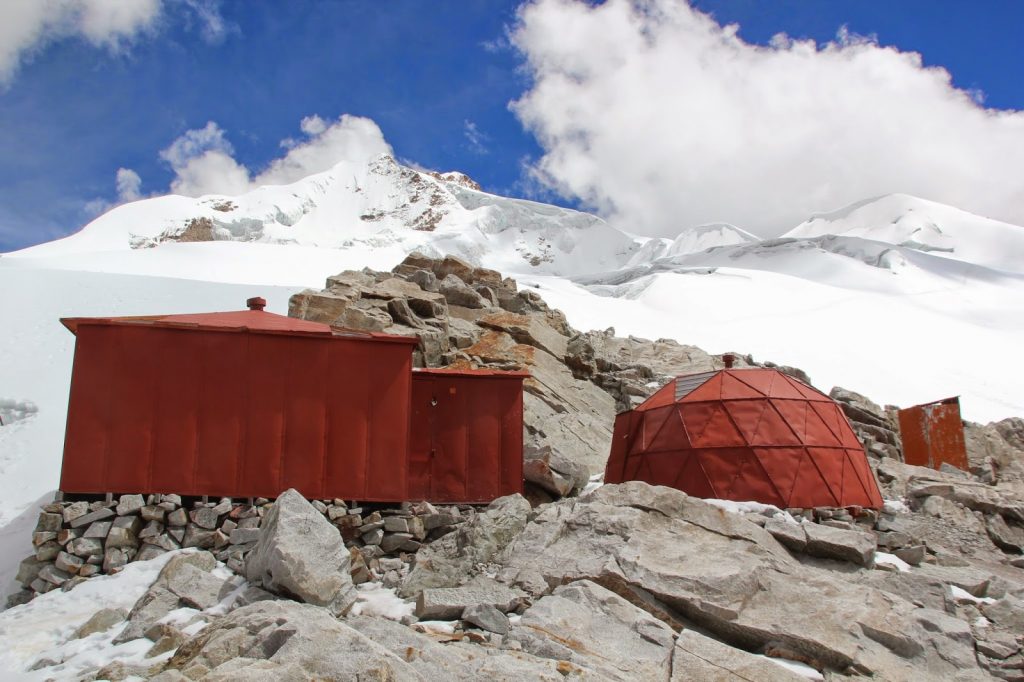
Paralyzed hand
What a bedtime story… Not only because of that I couldn’t sleep. For 10 minutes I was completely out of breath, every time I just turned around in my sleeping bag. At midnight the alarm clock rang. I didn’t sleep for a minute. How should I drag myself up that terrific mountain right now !? I have to go to the toilet three times. But the real shock came at breakfast: The fingers of my right hand suddenly became stiff. Paralysis. They cramped. Is my body set to emergency? Quickly I called Miguel for help. But he calmed down in his usual way. “Can happen.” With a hand, that I could neither move nor feel, an ascent is impossible. I waited and continued eating with my left hand. Miguel said that a few years ago a Swiss woman’s fingers had to be amputated because she wanted to take so many photos at the cold summit. Well, that was Miguel’s way to calm down. A painful tingling slowly came 10 minutes later. 15 minutes later the feeling was there again. Relieved. Let’s get dressed. Come on!
Ascent - day 3
45 minutes later than planned Miguel and I start at 1:45 am. Slight headache, but not bad. Slowly I put one foot in front of the other. Always breathe calmly, I thought. it didn’t take us long when we reached the German. Acute mountains sickness. He had to give up with his guide. Let’s not get misled! Go on slowly. Breathe in. Calmly. Exhale. 2h later I suddenly recognized the two Japanese girls at about 5,500m. Man, you become really happy if you get to meet friends in such an area. At first. But then I saw the reason: acute mountain sickness. They had to give up and return back too. Oh man! They looked much stronger yesterday than I did. Ok. Stay focused! Go on slowly. Breathe in. Calmly. Exhale. My headache didn’t get worse. I felt good. And then we reached the ice wall at 5,700m.
Ice wall
I was full of happiness to have made it until here, even though I didn’t see the ice wall at all. It was pitch black. Miguel was already positioning himself behind me. That meant, this time I should set the first steps. Alright. Ice ax in my hand. And up we climb! To my relief, the ice wall was not vertical, just pretty steep. With every grip and step I punched my ice ax and crampons into that eternal ice, so that I could pull myself up well. For the first time I thought: I could really overcome this wall. And indeed. We made it.
Now I was at 5,800m. Time for a banana break. But mine has turned into banana ice cream. My drinking water had also turned to ice. So I looked around. I saw La Paz lightning deep below us. There! An airplane. It seemed to be almost at the same height level. The stars were incredibly beautiful from here. And then I realized that my headache was gone. So today it actually seemed possible. We carried on. Miguel went ahead again and always listened to my breathing. If it was too fast, he stopped for a while. We were really a great team! And then, we stood on the last little mountain base. While I was resting, Miguel was preparing everything for the last critical part of our climb.
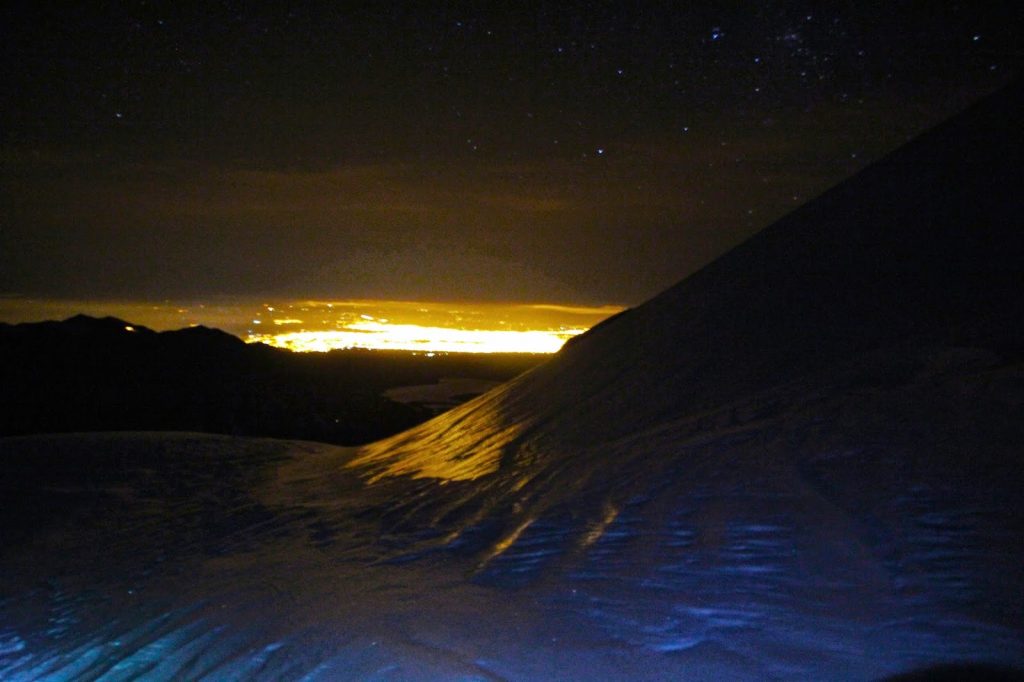
Danger! Turn around?
The moonlight gave me a little idea of what I would face here. No! I thought. This is too crazy! That mountain ridge is usually 80cm wide – but sometimes only 20cm. To the left it goes down 300m vertically. And a 800m drop to the right. It has -17°C. The summit is just over there. I can see it. 88m were missing. But I’m already at 6,000m. Such a nice number. Actually I really don’t have to do that anymore. Miguel noticed my hesitating. “Mike, you can be really proud of yourself. You made it this far. We can turn around here too. You decide alone.” I thought about it. While sitting for 10min. The thought of turning back just before the summit, this was actually ok for me. Miguel was right. But was my fear justified?
Question of Mental Strength
Accepting a calculated risk forces you to question yourself. So I tested my physical and mental ability. Physically I’m fit. Mentally I tried to imagine the summit ridge on a wide road. Even if the path is 20cm wide, I would never fall off that path if I walk slowly. So what stopped me were my thoughts, not the situation itself. But let’s check the external circumstances. Except for the cold there was no wind and the weather was excellent. So both the internal and external conditions were great. This is just about staying mentally strong. I got up. And said to Miguel: “Vamos“. All my concentration went into the next steps. Every 2 meters Miguel secured the rope. Speaking to myself helped me a lot. ‘Slowly the left foot in front of the right foot. And now the right in front of the left.’ After 20-30 meters the worst part was over. From here the ridge became wider. And now the adrenaline was pouring into me. Now it was clear to me that only a few meters were left to a personal milestone.
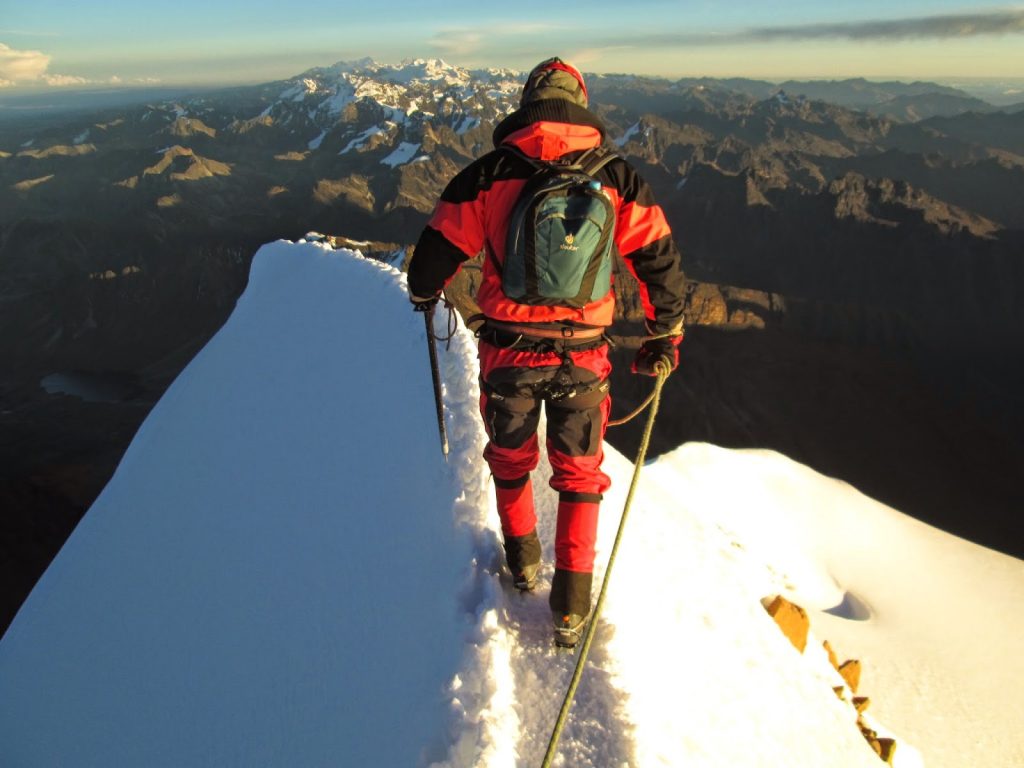
Summit
I fell right into Miguel’s arms. Then in the snow. And then everything went out of me. Instead of laughing around, I cried out of happiness. I thought of my pulmonologist, who has set me a strict altitude limit of 3,500m. And the fact that I am now sitting at 6,088m above sea level without any headache, I am in best shape and can even breathe in deeply. I also thought about how many friends said to me: ‘You must be tired of life if you risk that with your lungs.’ There was only one person who believed in me: ME. Strength does not only grow from physical strength or blind ambition, but from self-discipline and an enormous will. Now I opened my eyes. Colours of yellow, orange and red already shining on the horizon: sunrise. And my eyes reflected the first sun rays of a new time.
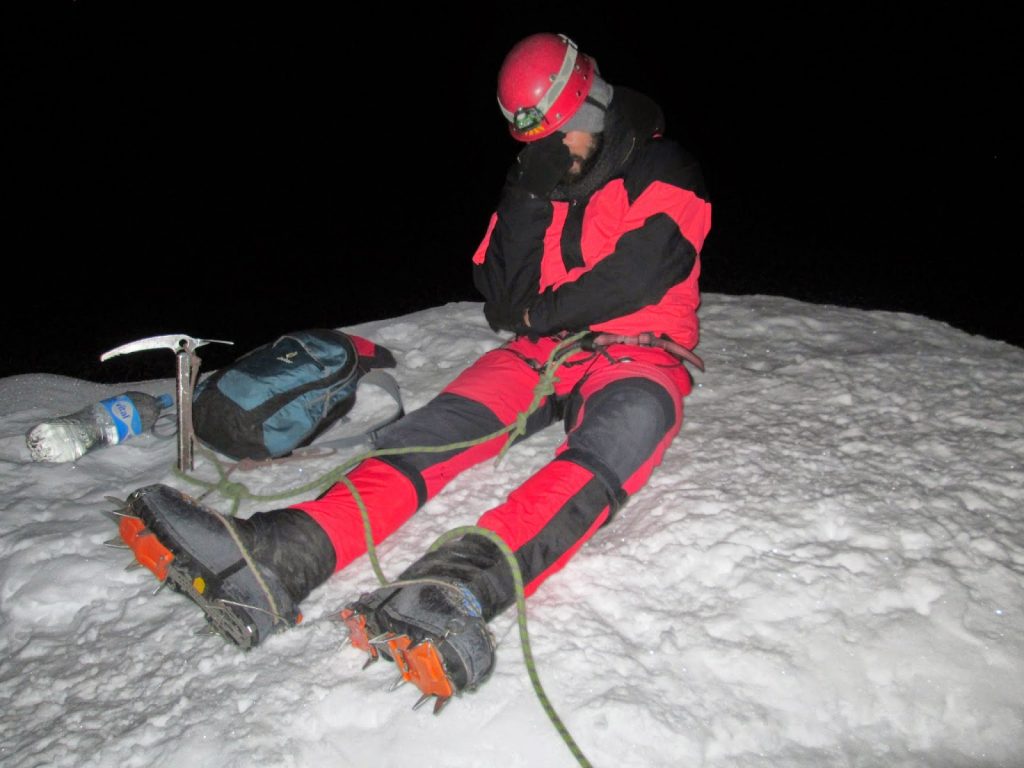
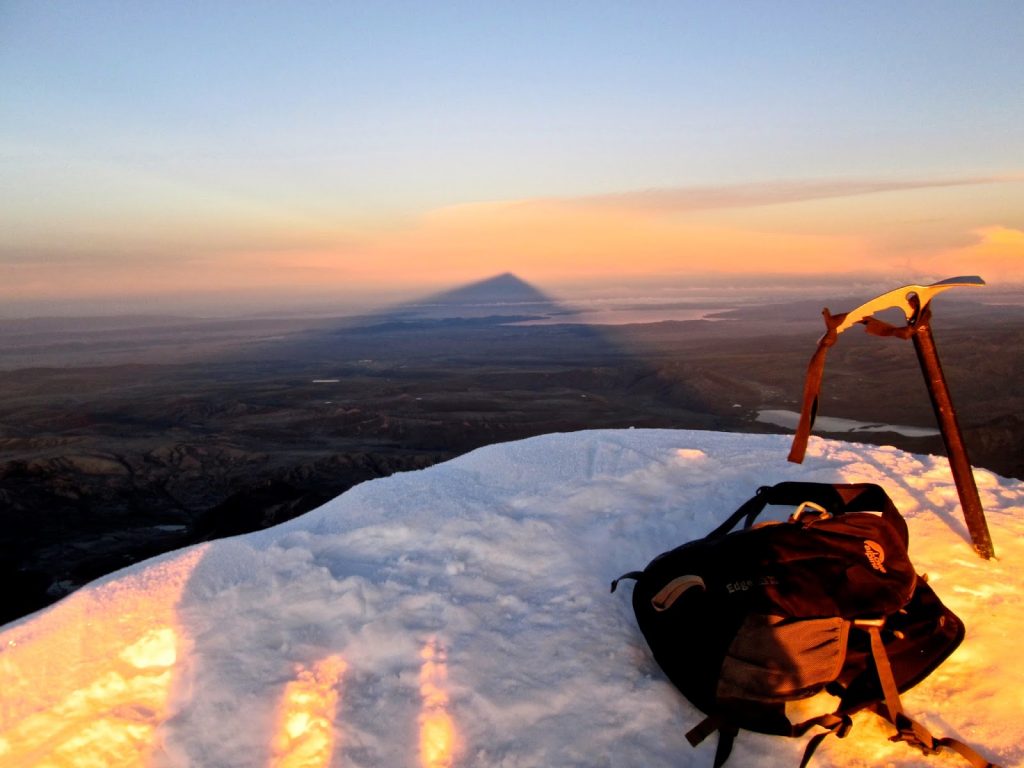

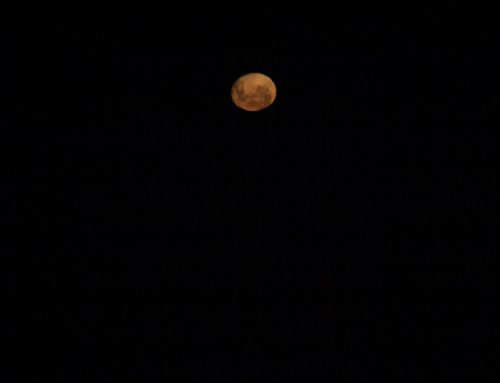
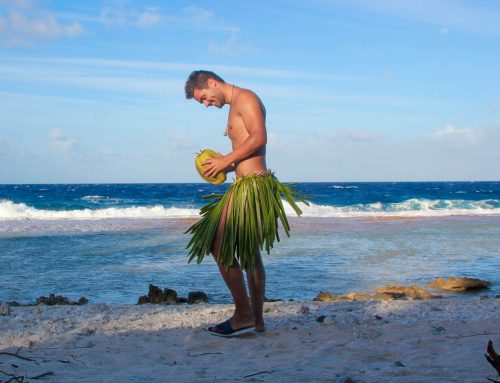
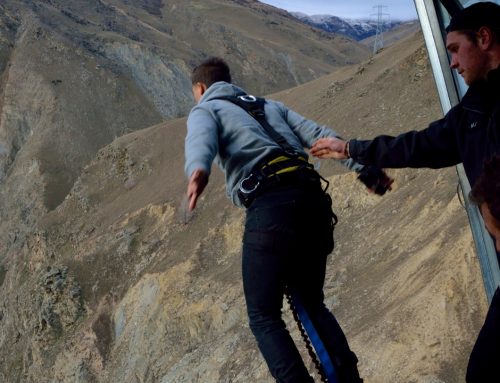
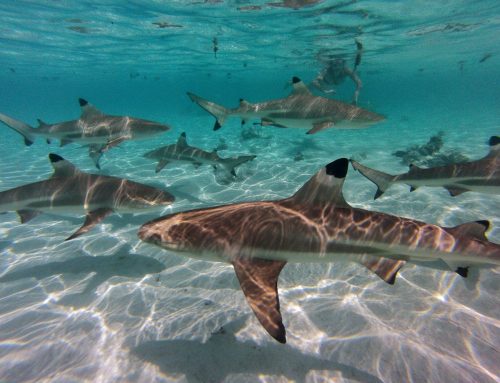
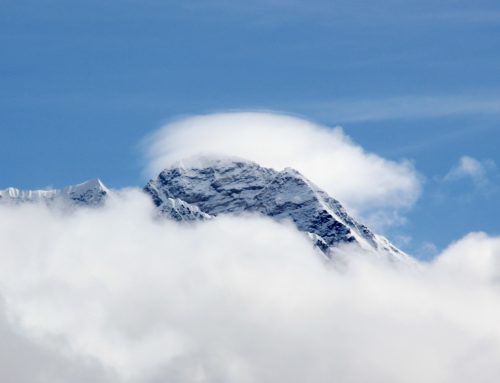
Leave A Comment